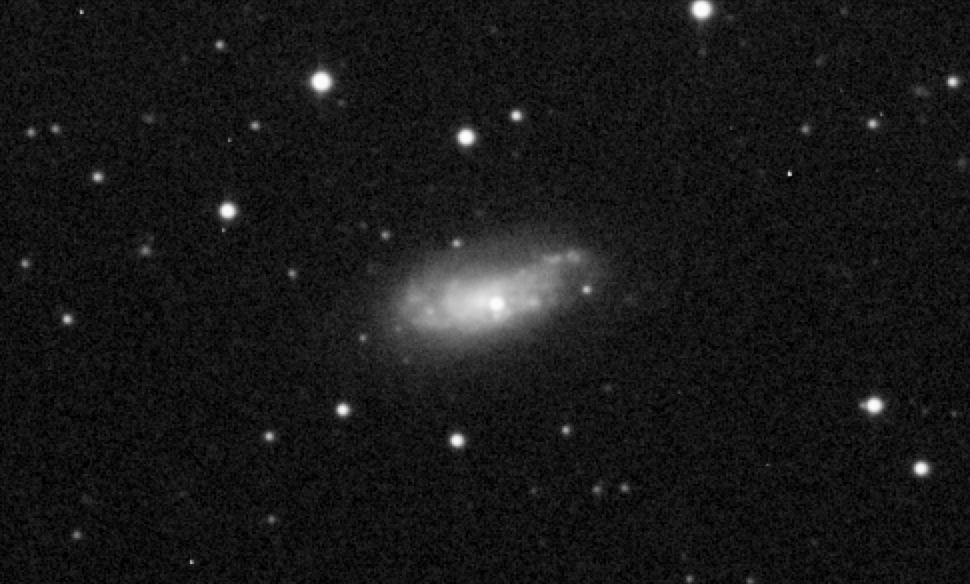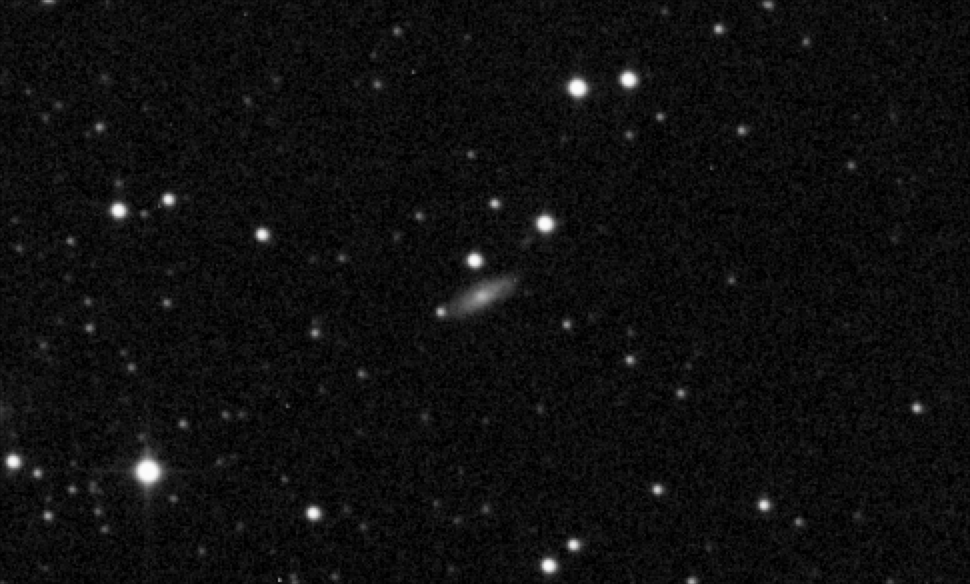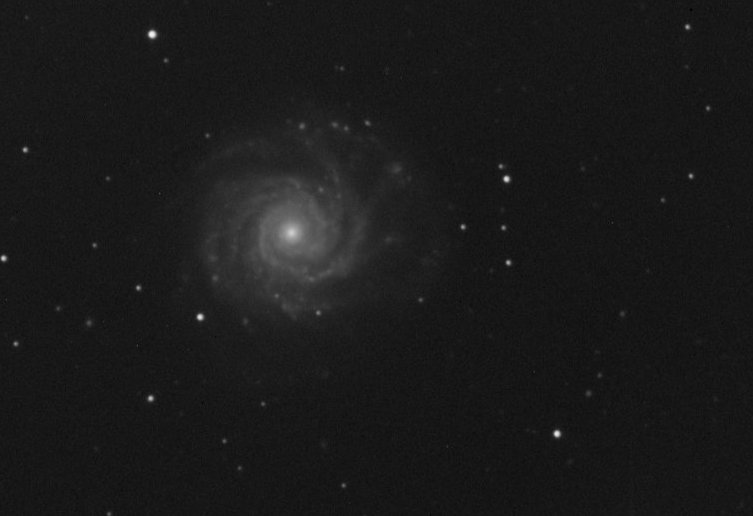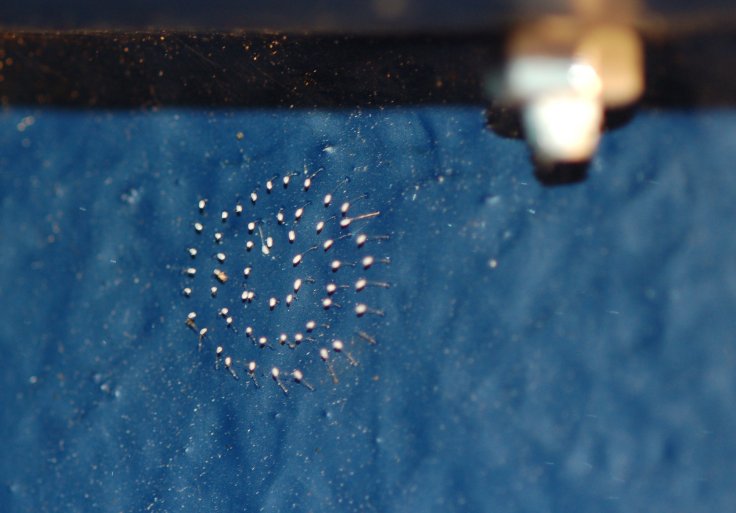I haven’t had the chance to do much imaging lately so I stepped into my WABAC machine and dug up an image from the archive.
The large nebulous object in the image is M87, a very large elliptical galaxy visible in the constellation Virgo. Elliptical galaxies are visually quite un-remarkable. Spherical, featureless and usually devoid of gas, these galaxies consist of very old stars. The lack of gas results in little to no stellar creation. All this leads to a fairly bland appearance.
So, why did I take a set of images of this one?
Every once in a while, I will try to image something unusual just for the challenge. Most of the time the local light pollution combined with the small aperture of my telescope prove too much for the intended target.
But, not this time.
Although discovered in 1781 by comet hunter Charles Messier it wasn’t until 1947 that the galaxy was identified as a powerful radio source. Photography showed a visible jet of material and it was suggested the jet was the source of the radio energy. Further investigation showed the galaxy was a very strong X-ray and Gamma ray source as well. Hidden deep within the halo of stars that make up M87 is a beast. A supermassive black hole at the center of the galaxy powers the jet and provides the energy for the X-ray and Gamma ray emissions. My equipment cannot image the black hole, the X-rays or Gamma rays, so my personal challenge was to image the jet.
I had tried several times before but it always seemed that I could not capture enough light. I took a lot of exposures and stretched the combined stack well beyond a pleasing image but just couldn’t find it. I kept thinking that I would have to get a larger telescope. (I do need a larger telescope.)
It was then the jet revealed itself. The jet is only 5000 light years long. The galaxy is much much larger. So only by reducing the overall brightness does the jet, buried deep in the galaxies glow, finally become visible. I had been looking too far from the galaxies core.
The image is ten 300 second exposures.
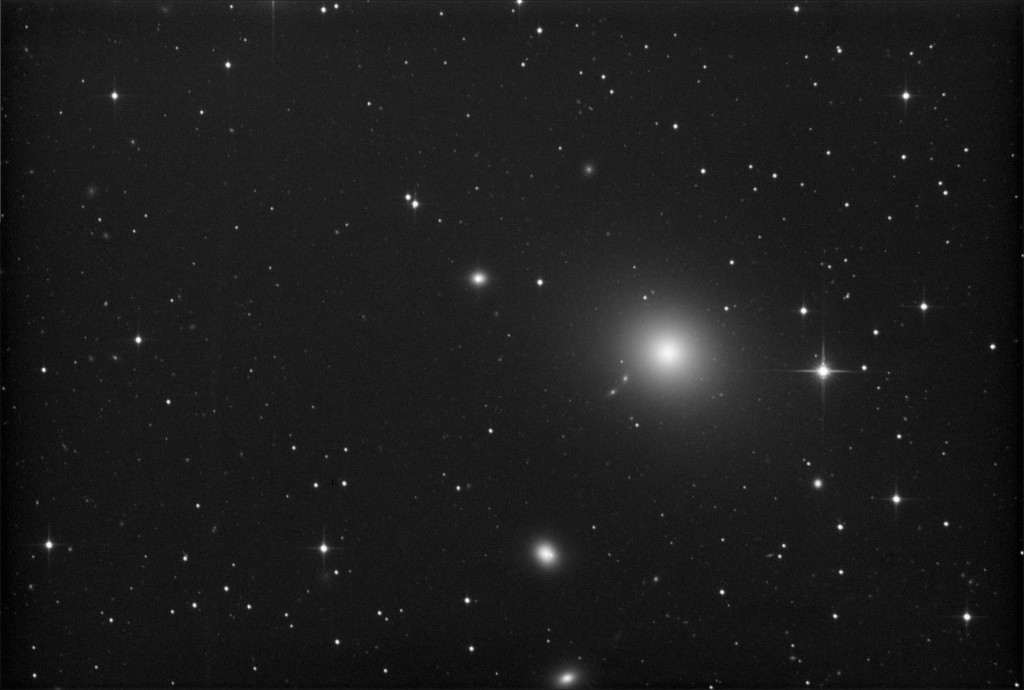
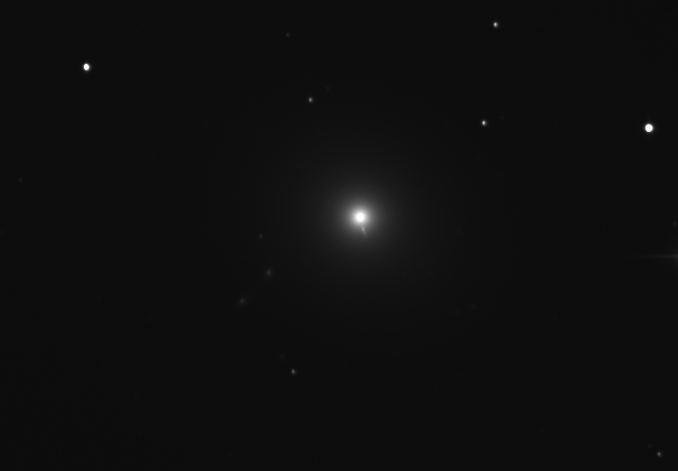
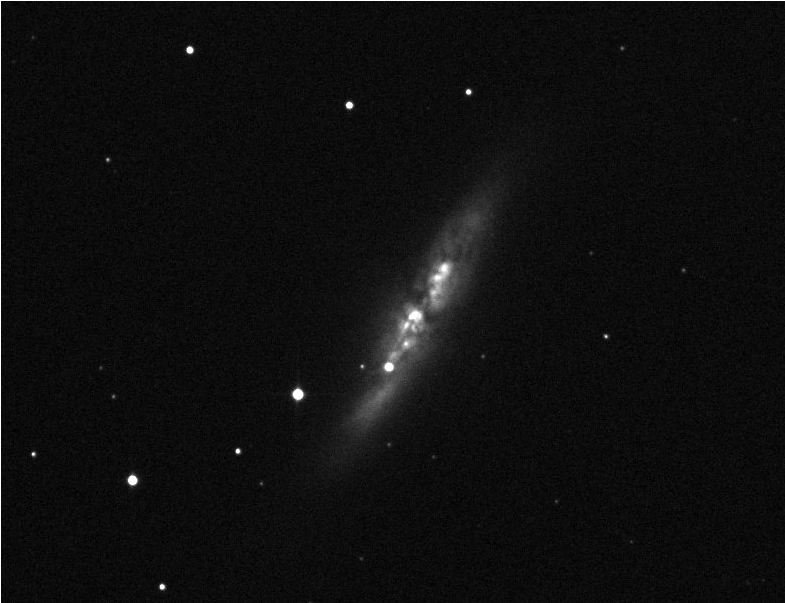
![The Great Hercules Cluster (M 13) [C:40x30s]](https://ptobservatory.com/wp-content/uploads/2011/01/decon_3_M-13-1024x690.png)
